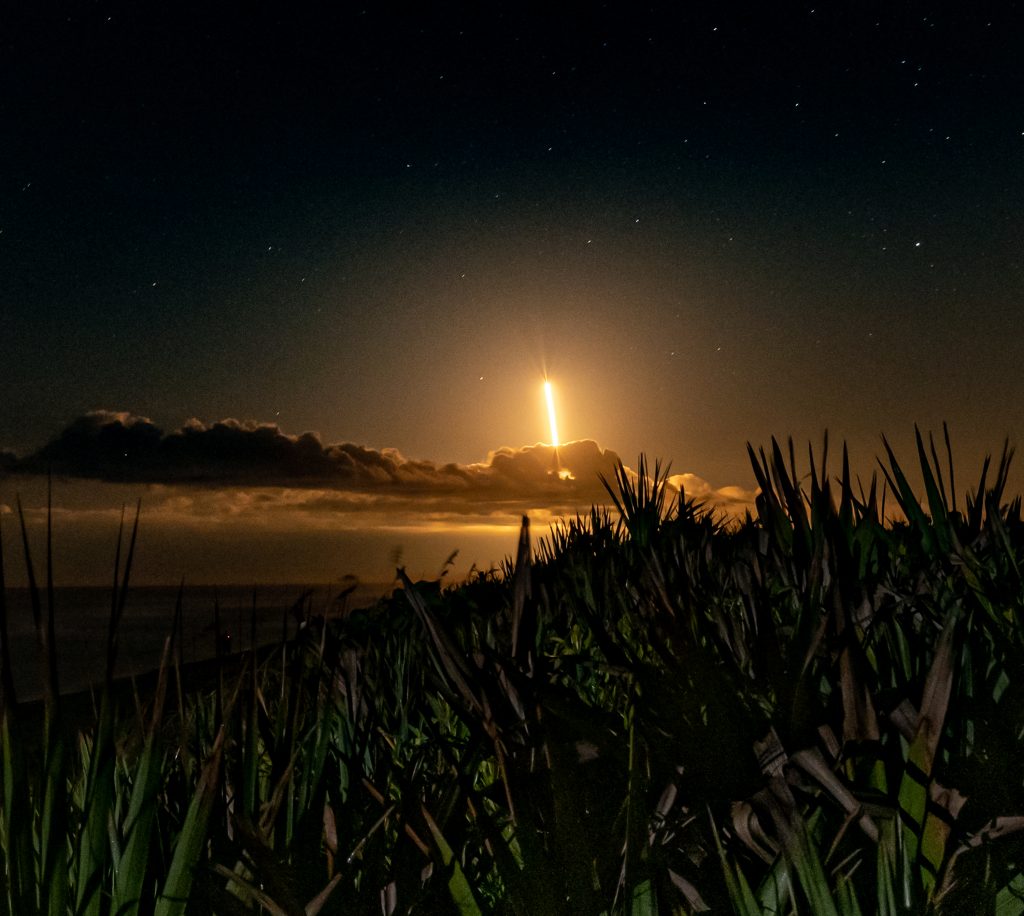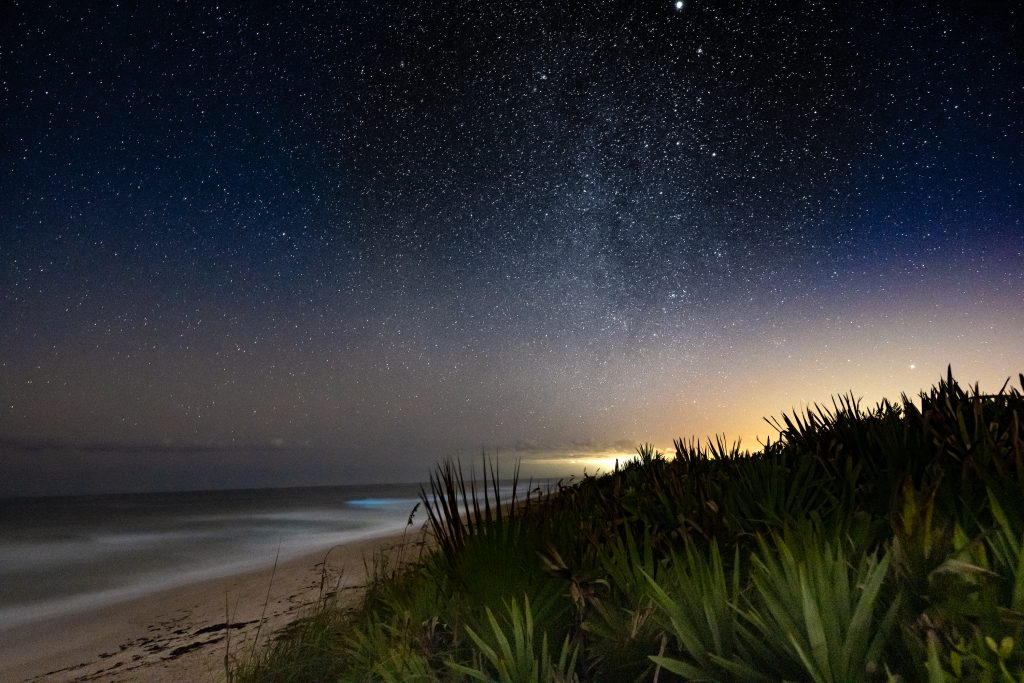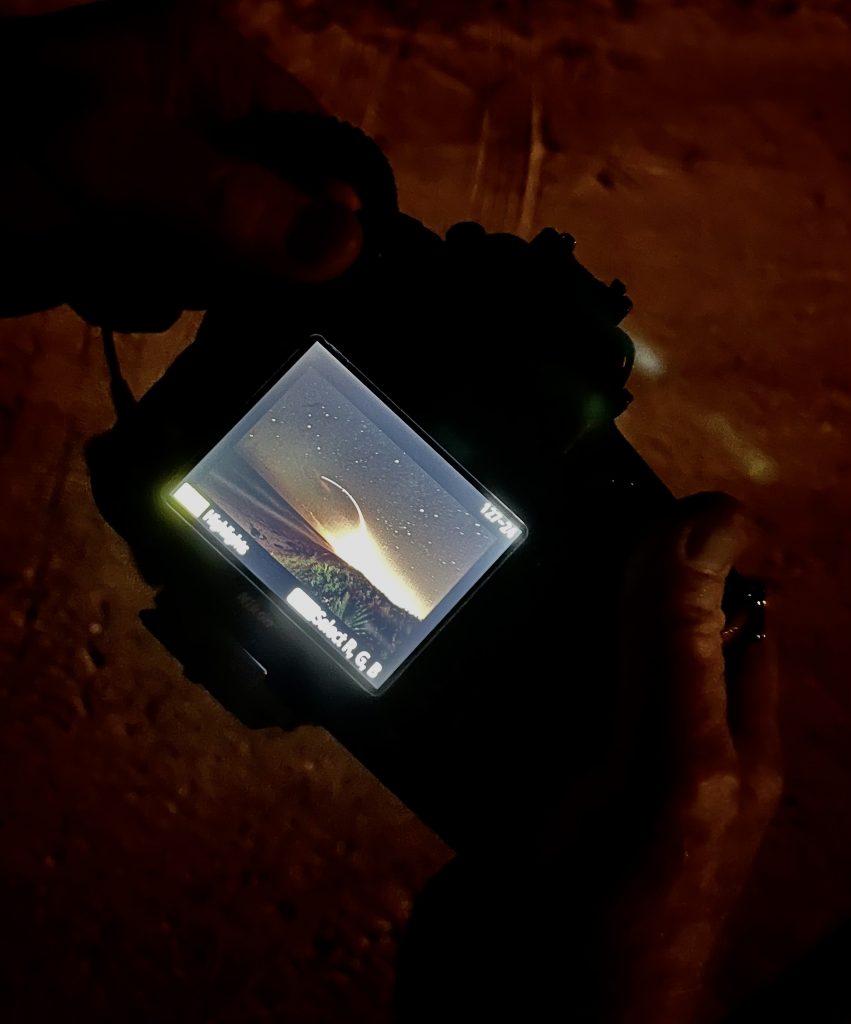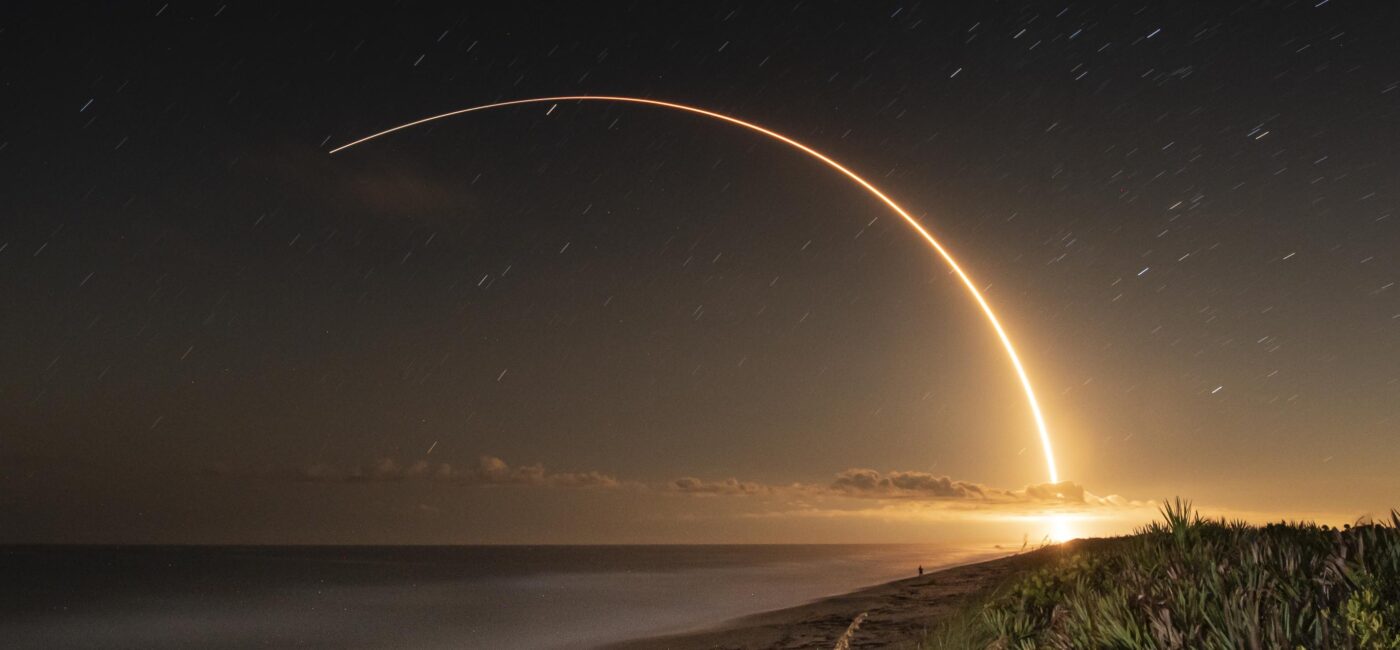
The night was dark and clear. The time: 5:10am—T-minus 20 minutes until the launch of a powerful Atlas V rocket. The place: Canaveral Seashore 24 miles north of Kennedy Space Center.
I placed our two tripods and cameras on the dune crossover and pointed them south. Framing the target was easy. The Palmetto covered sand dunes pointed directly to a soft glow of light beyond the horizon—Launch Pad for the Atlas 5 rocket carrying the LUCY mission to the asteroids of planet Jupiter.
We could hear the loud crashing of ocean waves, but could not see them. On this remote Florida barrier island, we were far from artificial light. The stars blazed vividly from the Mosquito Lagoon in the west to the dark Atlantic Ocean horizon to the east. We were
out in the wild, perched on a boardwalk straddling the dune of the largest undeveloped beach on Florida’s Atlantic Coast—where the night belongs to swaying Sea Oats, Sea Grapes, foraging Racoons, Wild Boars and nesting Sea Turtles.

Using the live view screen on the camera backs, I focused until the stars appeared pin-sharp.
(The trick to this technique is to pre-set your focus to Infinity back in the car. Wearing a head lamp to avoid fumbling in the dark is essential. Dial the ISO to the max to around 10,000 to easily locate a bright star on the live view screen, zoom in all the way, then focus until the stars cease to be round balls and shrink down to become points of light)
T-Minus 10 minutes: Both cameras were focused. My wife and I framed the Cape’s glow in the bottom right hand third of the frame. I hoped the rocket would head east over the ocean—and not south and away from us.
I love long exposure photography—the camera resolves details the human eye cannot see.
With the shutter on the bulb setting, I would press a remote trigger once to start and once to stop the exposure. I took a 4 minute test shot of the stars and decided on ISO400 and F11. I imagined the rocket taking about 4 or 5 minutes before it would vanish from view based upon earlier launches I had photographed from my home 120 miles south in coastal Jupiter Florida.
“Camera Two”, a Nikon Z7II was our back up. I tested 20 second exposures until the stars looked good at F8 and ISO 500. I put the shutter on a 2-second delay. My wife and fellow adventurer would take a new shot every 20 seconds.
At T-minus 2 minutes, we were ready to go and the excitement was building.

T-minus 10 seconds: The glow of the Cape suddenly expanded like a super nova. This distant flare of light brightened tenfold to fill the sky. I pressed the remote shutter.
The Atlas V climbed into view just above the Palmetto covered dune and the rolling Atlantic surf. Its glowing fire rose silently and within seconds it diminished, eclipsed by a cloud.
Long rays of light spiked outward from this tiny cloud, the only one in the sky. Then the rocket emerged brighter than before.
Adding to this moment of awe, a shock wave of sound buffeted our ears and nerve endings.
We spontaneously cheered. Even at 24 miles distance, the deep rumble, pops and crackles of the powerful propellant burning engine drowned out the ocean waves.
For five spellbinding minutes, we admired the beautiful curve of light draw itself across the black velvet sky.
5-minutes mission clock: The light dimmed, I closed the shutter of camera one and was rewarded with the money shot I envisioned– a modern space rocket lancing over a wild and raw coast! The image was without power lines, buildings, bridges, piers and people! Pure Florida! Future Florida!

The days of research and scouting paid off. I had begun weeks earlier viewing web published images and videos. I’ll save you a lot of time. Go right to the site of rocket photography expert, Ben Cooper. http://www.launchphotography.com His work is in a league by itself. I also recommend practicing first in the comfort of your home–setting up your camera in a dark room with only a headlamp. Without this practice, I would have missed this great opportunity for a picture to be proud of.
Bob Gibson is the founder of Photo Masters Workshops. He hosts long exposure photography workshops in Florida, Alaska and Wyoming.
Aspiring rocket photographers can learn more about launches at the following sites: https://spaceflightnow.com
http://www.ulalaunch.com https://www.spacex.com/launches/
https://www.nasa.gov/multimedia/nasatv/#public
###
